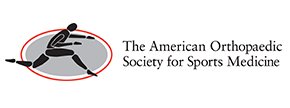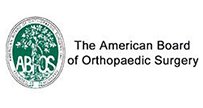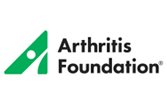Shoulder
Shoulder Anatomy
The shoulder is the most flexible joint in the body making it the most susceptible to instability and injury. It is a 'ball-and-socket' joint.
For more information about Shoulder Anatomy , click on below tabs.
Surgery Case List
The patient is a 50 year-old female with Adhesive Capsulitis. Although her initial pain dissipated, she continued to suffer from a significant decrease in range of motion.
For more information about Surgery Case List , click on below tabs.
Conditions
Rotator Cuff Tear
Rotator cuff is the group of tendons in the shoulder joint providing support and enabling wider range of motion. Major injury to these tendons may result in tear of these tendons and the condition is called as rotator cuff tear.
For more information about Rotator Cuff Tear, click on below tabs.
Shoulder Pain
Pain in the shoulder suggests a shoulder injury which is more common in athletes participating in sports such as swimming, tennis, pitching and weightlifting.
For more information about Shoulder Pain, click on below tabs.
Subluxation
The shoulder is a highly mobile ball and socket joint. The ball of the upper arm bone (humerus) is held in place at the socket (glenoid) of the shoulder blade (scapula) by a group of ligaments.
For more information about Subluxation, click on below tabs.
Shoulder Impingement
Shoulder impingement is the condition of inflammation of the tendons of the shoulder joint. It is one of the most common causes of pain in the adult shoulder. The shoulder is a 'ball-and-socket' joint.
For more information about Shoulder Impingement, click on below tabs.
SLAP Tears
The shoulder joint is a ball and socket joint. A 'ball' at the top of the upper arm bone (the humerus) fits neatly into a 'socket', called the glenoid, which is part of the shoulder blade (scapula).
For more information about SLAP Tears, click on below tabs.
Arthritis of the Shoulder
The term arthritis literally means inflammation of a joint, but is generally used to describe any condition in which there is damage to the cartilage. Damage of the cartilage in the shoulder joint causes shoulder arthritis.
For more information about Arthritis of the Shoulder, click on below tabs.
Frozen Shoulder
Frozen shoulder, also called adhesive capsulitis is a condition characterized by pain and loss of motion in shoulder joint. It is more common in older adults aged between 40 and 60 years and is more common in women than men.
For more information about Frozen Shoulder, click on below tabs.
Shoulder Instability
Shoulder instability is a chronic condition that causes frequent dislocations of the shoulder joint.
For more information about Shoulder Instability, click on below tabs.
Shoulder Joint Tear
The shoulder joint is a “ball and socket” joint that enables the smooth gliding and thereby the movements of arms. However, it is inherently unstable because of the shallow socket.
For more information about Shoulder Joint Tear, click on below tabs.
Dislocated Shoulder
Playing more overhead sports activities and repeated use of shoulder at workplace may lead to sliding of the upper arm bone, the ball portion, from the glenoid–the socket portion of the shoulder.
For more information about Dislocated Shoulder, click on below tabs.
Little League Shoulder
Little league shoulder is an injury to the growth plate of the upper arm bone in the shoulder joint of children. It is caused due to overuse from pitching or throwing, especially in children between the ages of 10 to 15 years.
For more information about Little League Shoulder, click on below tabs.
Clavicle Fracture
Clavicle fracture, also called broken collarbone is a very common sports injury seen in people who are involved in contact sports such as football and martial arts as well as impact sports such as motor racing.
For more information about Clavicle Fracture, click on below tabs.
Bicep Tendon Rupture
The biceps muscle is present on the front side of your upper arm and functions to help you bend and rotate your arm.
For more information about Bicep Tendon Rupture, click on below tabs.
Burners and Stingers
Burners and stingers are common neck or shoulder injuries characterized by intense burning or stinging pain which can radiate from the neck to the hand.
For more information about Burners and Stingers, click on below tabs.
Shoulder Trauma
Shoulder injuries most commonly occur in athletes participating in sports such as swimming, tennis, pitching, and weightlifting. The injuries are caused due to the over usage or repetitive motion of the arms.
For more information about Shoulder Trauma, click on below tabs.
Fracture of the Shoulder Blade
The scapula (shoulder blade) is a flat, triangular bone providing attachment to the muscles of the back, neck, chest and arm. The scapula has a body, neck and spine portion.
For more information about Fracture of the Shoulder Blade, click on below tabs.
Adult Forearm Fractures
The forearm is made up of 2 bones, namely, the radius and ulna. The primary function of your forearm is rotation i.e., the ability to turn your palm up and down.
For more information about Adult Forearm Fractures, click on below tabs.
Forearms Fracture in Children
The radius (bone on the thumb side) and ulna (bone on the little-finger side) are the two bones of the forearm. Forearm fractures can occur near the wrist, near the elbow or in the middle of the forearm
For more information about Forearms Fracture in Children, click on below tabs.
Glenoid Fractures
The glenoid is the socket that forms the ball and socket joint of the shoulder. Fractures of the glenoid are rare but can occur due to major trauma or during high-energy sports activities.
For more information about Glenoid Fractures, click on below tabs.
Baseball and Shoulder Injuries
Shoulder injuries in baseball players are usually associated with pitching. While this overhand throwing activity can produce great speed and distance for the ball, when performed repeatedly, it can place a lot of stress on the shoulder.
For more information about Baseball and Shoulder Injuries, click on below tabs.
Procedures
Shoulder Injections
Ultrasound is a common imaging technique that employs high frequency sound waves to create images of organs and other internal structures of the body.
For more information about Shoulder Injections, click on below tabs.
Shoulder Joint Replacement
The shoulder is a highly movable body joint that allows various movements of the arm. It is a ball and socket joint, where the head of the humerus (upper arm bone) articulates with the socket of the scapula (shoulder blade) called the glenoid.
For more information about Shoulder Joint Replacement, click on below tabs.
Partial Shoulder Replacement
Partial shoulder replacement, also called shoulder hemiarthroplasty is a surgical procedure during which the upper bone in the arm (humerus) is replaced with a prosthetic metal implant, whereas the other half of the shoulder joint (glenoid or socket) is left intact.
For more information about Partial Shoulder Replacement, click on below tabs.
Reverse Shoulder Replacement
Reverse total shoulder replacement, is an advanced surgical technique specifically designed for rotator cuff tear arthropathy, a condition where the patient suffers from both shoulder arthritis and a rotator cuff tear.
For more information about Reverse Shoulder Replacement, click on below tabs.
Revision Shoulder Replacement
Total shoulder replacement is the replacement of the head of the humerus (upper arm bone) and the glenoid cavity (cavity of the shoulder blade) into which the humerus fits, with artificial prostheses to relieve pain, swelling and stiffness caused due to damage of cartilage at the articulating surfaces.
For more information about Revision Shoulder Replacement, click on below tabs.
Shoulder Hydrodilatation
Hydrodilatation is one of the latest techniques for treatment of frozen shoulder or adhesive capsulitis. Adhesive capsulitis or frozen shoulder is a condition characterized by the contraction and inflammation of the joint capsule surrounding the shoulder joint.
For more information about Shoulder Hydrodilatation, click on below tabs.
Minimally Invasive Shoulder Joint Replacement
Shoulder joint replacement is a surgical procedure to replace damaged bone surfaces with artificial components to relieve pain and improve functional ability in the shoulder joint.
For more information about Minimally Invasive Shoulder Joint Replacement, click on below tabs.
Arthroscopic Bankart Repair
The shoulder joint (glenohumeral joint) is a ball and socket joint, where the head of the upper arm bone (humerus) attaches to the shoulder socket (glenoid cavity). The shoulder socket is extremely shallow and therefore needs additional support to keep the shoulder bones from dislocating.
For more information about Arthroscopic Bankart Repair, click on below tabs.
Shoulder Labrum Reconstruction
The shoulder joint is a ball and socket joint. A 'ball' at the top of the upper arm bone (the humerus) fits neatly into a 'socket', called the glenoid, which is part of the shoulder blade (scapula). The labrum is a ring of fibrous cartilage surrounding the glenoid which helps in stabilizing the shoulder joint.
For more information about Shoulder Labrum Reconstruction, click on below tabs.
Shoulder Arthroscopy
Arthroscopy is a minimally invasive diagnostic and surgical procedure performed for joint problems. Shoulder arthroscopy is performed using a pencil-sized instrument called an Arthroscope.
For more information about Shoulder Arthroscopy, click on below tabs.
Arthroscopic Biologic Total Shoulder Resurfacing
Shoulder arthritis is an inflammatory condition causing pain and stiffness in the joint. It can be successfully treated with total joint replacement surgery which is commonly performed on older patients.
For more information about Arthroscopic Biologic Total Shoulder Resurfacing , click on below tabs.











